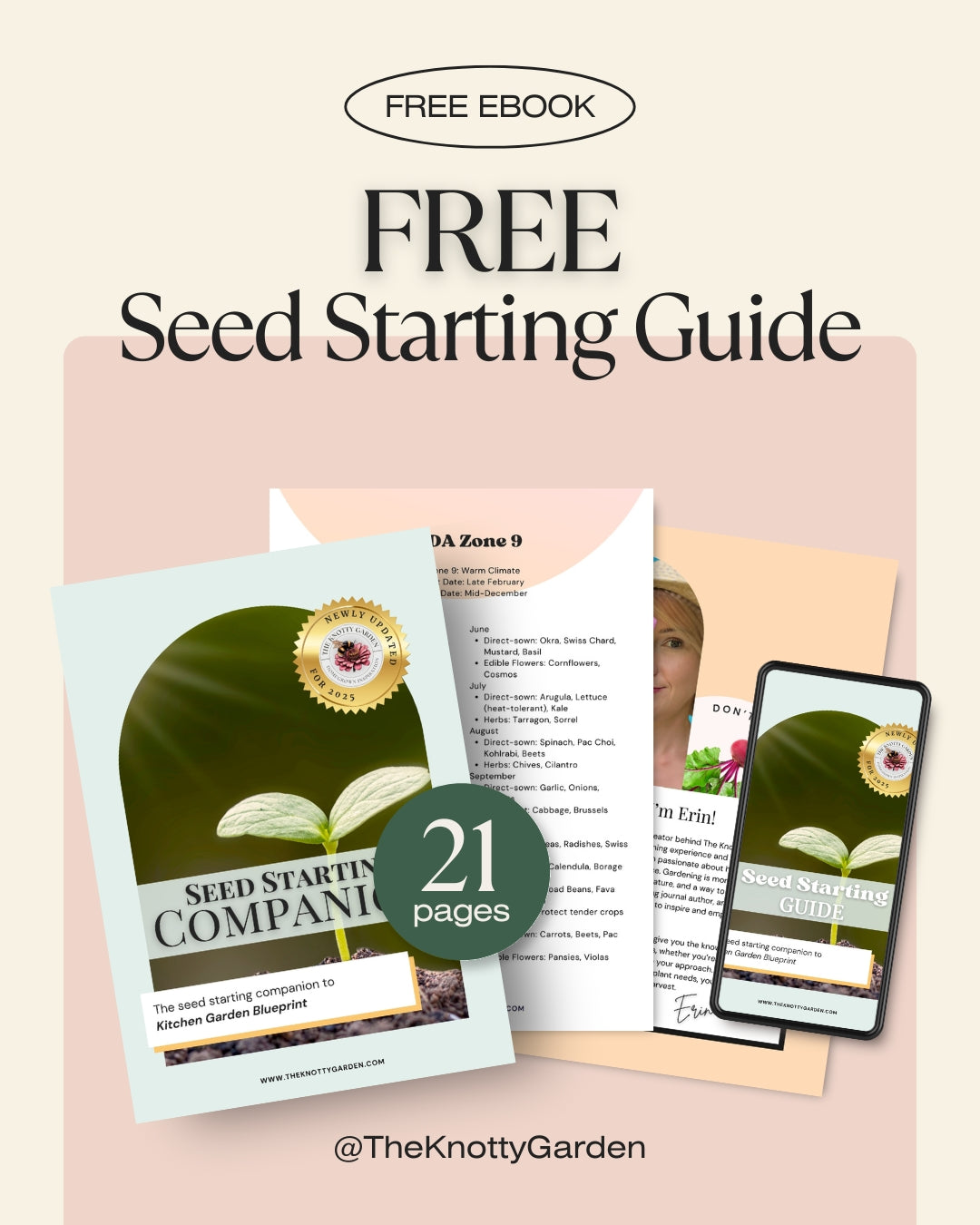If you're growing garlic, you're about to enjoy one of the season's secret treats: garlic scapes. These curly green stalks not only signal that your garlic is thriving—they're also delicious, versatile, and a vital part of the garlic-growing process.
In this post, we’ll cover:
-
The difference between hardneck and softneck garlic
-
When and how to harvest garlic scapes
-
A simple garlic scape salt recipe
-
When to harvest garlic bulbs
-
Plus: what to plant next while you wait for your garlic to finish!
🧄 Hardneck vs Softneck Garlic: Why Scapes Matter
Hardneck garlic (Allium sativum var. ophioscorodon) produces a stiff central stalk that eventually curls into a scape. These are the types most often grown in northern climates, including Canada and much of the northern U.S. They offer:
-
Larger, easy-to-peel cloves
-
Complex, rich flavors
-
The bonus harvest of garlic scapes
Softneck garlic (Allium sativum var. sativum), grown more commonly in milder climates, generally does not produce scapes. Instead, these varieties form more numerous cloves and store longer. You'll often see softneck garlic sold braided at farmers’ markets.
👉 Bottom line:
If you see scapes curling up in your garden, you're growing hardneck garlic—and you’re in for a treat.
✂️ When & How to Harvest Garlic Scapes
Scapes usually appear about 3–4 weeks before the bulbs are ready to harvest, often in late spring to early summer depending on your zone.
-
Timing:
Harvest when the scapes have made one to two full curls (like a pig’s tail), and before they straighten out. This is when they're most tender and flavorful. -
How to harvest:
Snip the scape low on the stem using clean garden shears or simply snap it off by hand where it naturally breaks.
🌿 Why harvest scapes?
Removing scapes allows the plant to redirect its energy into bulb development, resulting in larger garlic heads at harvest time.
🌱 After Harvesting Scapes: Care for Growing Garlic
Once the scapes are removed, your garlic still needs attention for the next few weeks:
-
Water:
Continue regular, deep watering, especially if the weather turns dry. Garlic likes consistent moisture as bulbs size up. -
Fertilize:
Apply a balanced organic fertilizer (such as fish emulsion or a diluted compost tea) to support bulb growth. -
Mulch:
Top up mulch to help retain moisture and suppress weeds during these final weeks.
🍽 Garlic Scape Salt Recipe
One of the easiest ways to preserve and enjoy garlic scapes is to make a garlic scape salt. It’s perfect for seasoning vegetables, meats, popcorn, and more.
Ingredients:
-
1 cup chopped garlic scapes
-
1 cup coarse sea salt
Instructions:
-
Chop scapes into 1" pieces.
-
In a food processor, pulse scapes and salt until combined into a damp, sandy mixture.
-
Spread thinly on a baking sheet and air-dry at room temperature for 1–2 days, or bake at the lowest oven setting until fully dry. Excessive heat during the drying process can cause the scapes to lose their bright green colour, so try to use minimal heat in this process.
-
Once dry, pulse again briefly to break up any clumps.
-
Store in an airtight jar. This will last you until next year's harvest (if you managed to grow enough!)
👉 Tip: You can also add lemon zest, pepper, or dried herbs for custom blends.
🧄 When to Harvest Garlic Bulbs
Approximately 3–4 weeks after harvesting scapes, start monitoring your garlic plants closely:
-
Watch the leaves:
Garlic is ready to harvest when the bottom 3–4 leaves have turned brown, but several green leaves remain. Each green leaf represents a wrapper layer around the bulb. -
Don’t wait too long:
Overmature garlic can split underground, reducing its storage life. -
Harvesting:
Loosen the soil gently with a fork or spade. Lift the bulbs carefully to avoid bruising or breaking. -
Cure:
Cure bulbs in a dry, shady, well-ventilated spot for 2–3 weeks. Once fully cured, trim the stems and roots and store.
🔄 Plan for Succession Planting
Once your garlic is harvested, don’t leave that valuable space empty!
What to plant next:
-
Start bush beans in cell trays now:
They germinate quickly and transplant beautifully into the freed-up space. -
Other options:
Lettuce, beets, carrots, radishes, or even a fall planting of kale or spinach can follow garlic.
👉 Tip: Garlic beds are typically weed-free and nutrient-rich after garlic, making them ideal for fast-maturing crops.
🌼 Quick Garlic Growing Timeline Recap
| Task | Timing |
|---|---|
| Harvest scapes | ~Late spring to early summer |
| Water & fertilize | Immediately after scape removal |
| Monitor for harvest | ~3–4 weeks after scape harvest |
| Harvest bulbs | When 3–4 bottom leaves are brown |
| Cure garlic | 2–3 weeks after harvest |
| Succession planting | Immediately after garlic harvest |
🌿 Final Thoughts
Garlic scapes are one of gardening’s small seasonal joys—a reward for your patience and a signal that the main harvest is just around the corner. With a little timing and care, you’ll enjoy both the tender, flavorful scapes and beautiful, fully mature garlic heads. And by planning your succession planting now, you’ll keep your garden productive and thriving long after the garlic is pulled.


